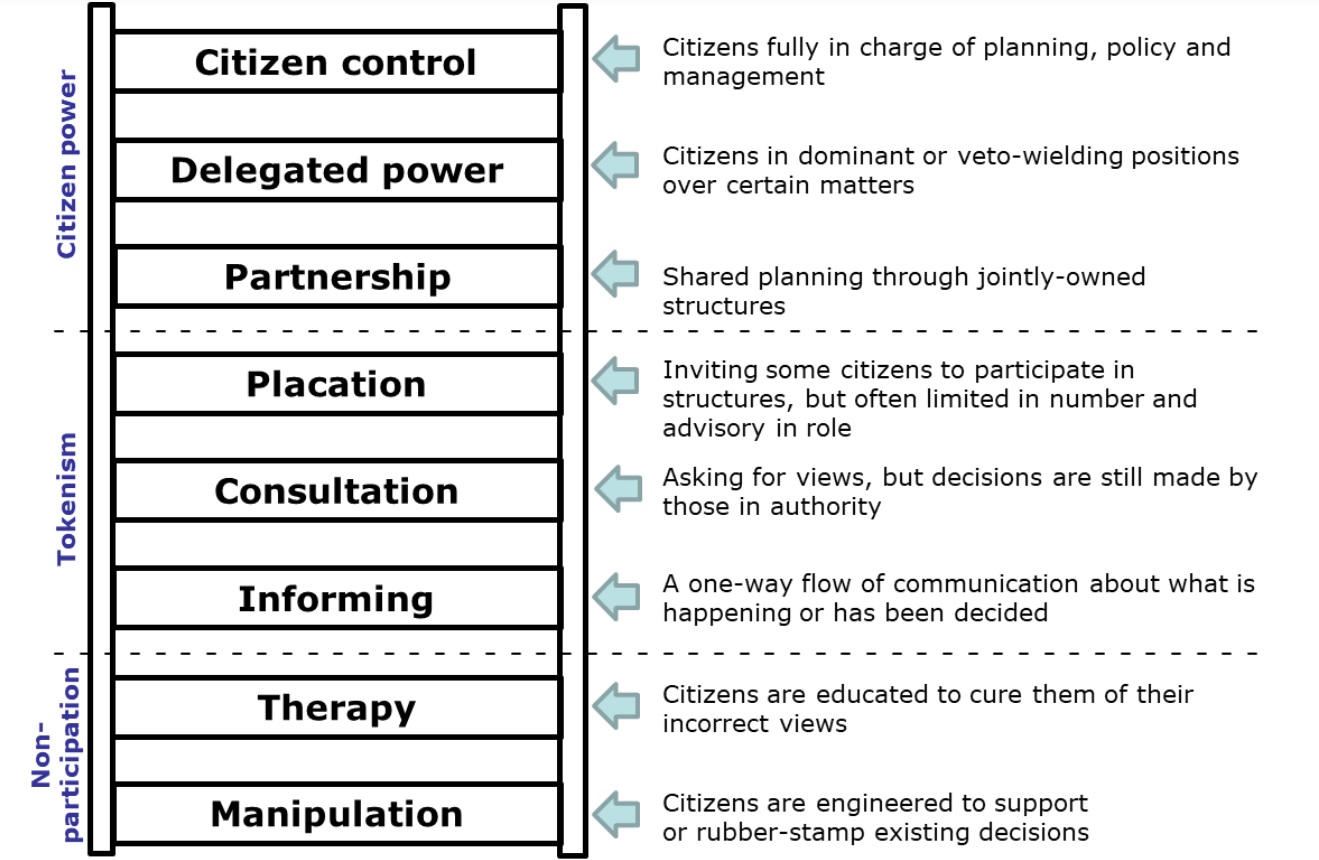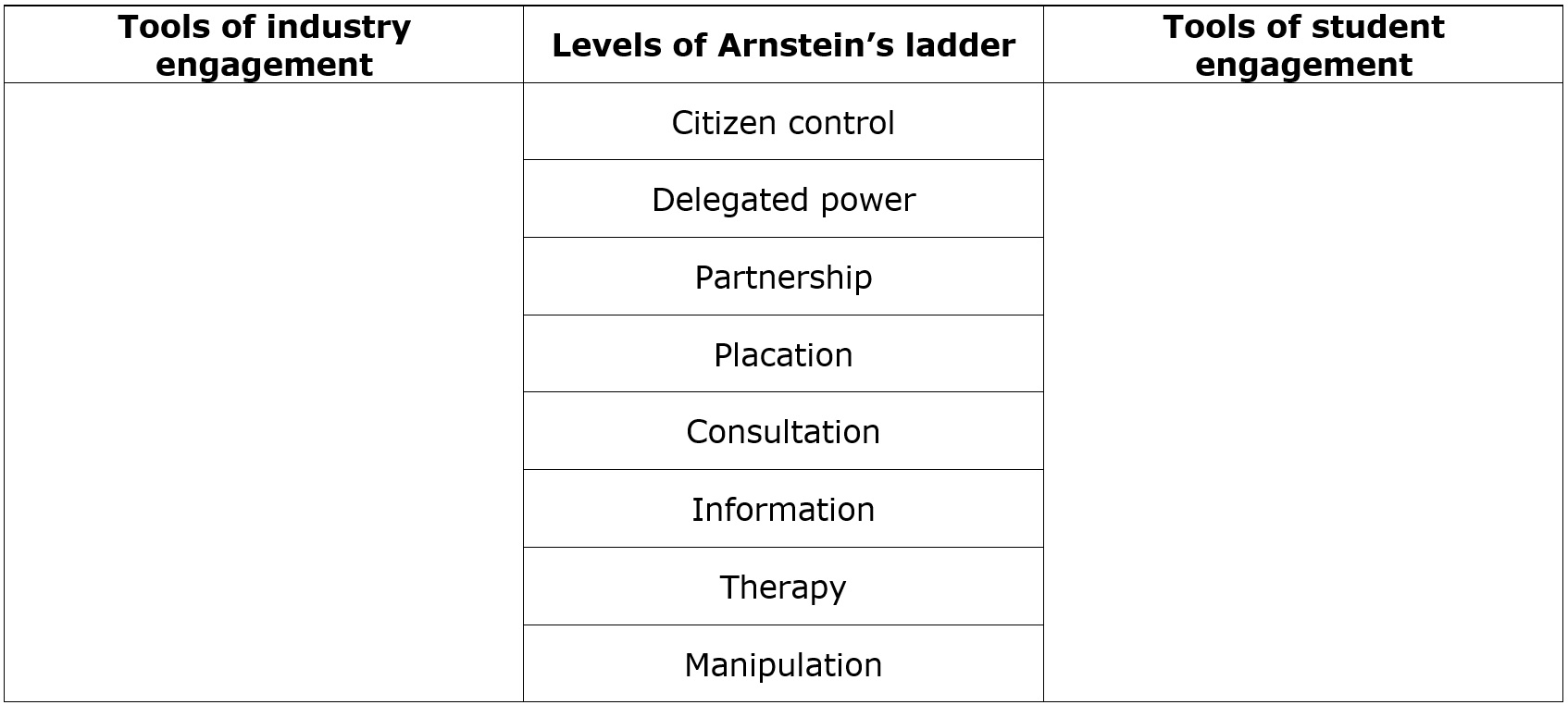 Simon Varwell, Senior Development Consultant at sparqs opens the new ‘Research in Practice’ blog series by asking two questions about student partnership in colleges.
Simon Varwell, Senior Development Consultant at sparqs opens the new ‘Research in Practice’ blog series by asking two questions about student partnership in colleges.
We often use the term ‘partner’ to describe students in our sector. We all (mostly?) like the idea and would say we at least strive for that relationship. But what does it actually mean to do things in partnership with students? Do we know the difference between partnership and other relationships, and would we recognise and celebrate partnership when we achieve it?
One way of finding out what partnership means is to look at sector policy. Partnership is a key aspect of both Scotland’s Student Engagement Framework and Students’ Association Framework. The 2019 quality arrangements said that colleges ‘should view students as partners in supporting improvement’ (SFC, 2019:5), while the Professional Standards for Lecturers in Scotland’s Colleges speaks of ‘students as learning partners’ (1.1) and partnership in the enhancement of learning (2.2).
A more exploratory way of understanding partnership, however, is to compare it to other types of engagement. A classic tool of measuring participation is Arnstein’s Ladder of Citizen Participation (Arnstein, 1969), which places partnership on a scale ranging from manipulation through to citizen control. sparqs has used it often in Scottish colleges, including through its contributions to CDN’s Governance Development Programme. The version of the ladder sparqs has developed is presented in figure 1.
Curiously, however, the bulk of research into the use of the ladder in student engagement has been in higher education, both in the United Kingdom (Bovill & Bulley, 2011; Carey, 2018; Buckley, 2018) and Ireland (Collins, et al., 2016, p. 12; Feeney et al., 2020). There is little apparent application in further education, one notable exception being Rudd et al. (2006) who explore it in a combined school and college context.
So this forms the first of our two questions…
How could you use the ladder to benchmark or explore student engagement in colleges?
Or to put it another way, how could it help you reflect on the student role in institutional governance, strategic planning, course-level enhancement, curriculum co-creation, staff development, or the shaping of national quality arrangements?
A useful exercise could be to tease out the difference between seeking students’ views (consultation), inviting them into existing structures (placation) and truly shifting the dynamic of power and decision-making (partnership). Where, in your responsibilities in your college, could some action research on this be impactful?
Meanwhile. beyond further and higher education the ladder has been used widely in many other sectors such as healthcare, social work, and urban planning where it was originally developed in the 1960s. Researchers in some of these sectors have criticised the ladder, arguing that it is too simplistic and linear for complex worlds with a multitude of providers, authorities and relationships (Tritter & McCallum, 2006; Collins & Ison, 2009). Others suggest that higher levels of participation are unreasonable aspirations where service users lack the skills or capacity to contribute effectively (de Leeuw, 2021; Stelmach, 2016). The view of the ladder is more positive in sectors where there is a clearer and often more contractual relationship between provider and user, and where collectivisation is stronger, such as housing (Hall & Hickman, 2011; Romanin, 2013).
This is relevant to learning and teaching in colleges, because at the core of virtually every job filled by a college graduate is stakeholder engagement, be it the involvement of service users, customers, the general public, or even fellow colleagues. How we engage those around us, respond to their needs and build on their ideas to make improvements is part of what makes an effective workplace, but also what underpins a democratic and inclusive society.
This brings us to our second question: if you have a curricular specialism in your college role…
How does your sector’s public engagement compare to your subject’s student engagement?
That is, where are the most effective tools, which engagement policy is most powerful, and where is there evidence of a real culture of partnership? To take just one example, what could childcare practice take from its parental or child engagement, to inform its student engagement? And conversely what are the ways in which students on childcare courses engage with shaping their learning, which could be usefully applied in the enhancement of childcare provision?
Here’s a simple exercise to try out with course colleagues. Firstly, write two lists. One should be all the tools with which you engage students in commenting on and shaping their learning. The other should be all the tools your industry or sector uses to engage its stakeholders or the general public. Then benchmark each tool against the ladder, with student engagement on one side and industry engagement on the other (see figure 2 below for a suggested framework). What do you observe? What potential transfer of practice might there be? How might your answers compare across your college or your industry, and what does this reveal about the concepts of engagement and partnership more generally?
Creating the future in partnership
Students and students’ associations have already been playing a key role in shaping the sector through these challenging times, and their voice will be at the heart of major forthcoming developments such as the creation of a tertiary quality framework and a new national standard for online and blended learning, two recommendations from the SFC’s Review of Coherent Provision and Sustainability which reported in 2021.
The role of students as partners will be only more important as we build from the pandemic. So now is the time to really think about what partnership means for us all – and about how sparqs might help you and your college to do so.
Simon Varwell
Senior Development Consultant
sparqs (Student Partnerships in Quality Scotland)
References
Arnstein, S. (1969). A Ladder of Citizen Participation. Journal of the American Institute of Planners, 35(4), 216-224.
Bovill, C., & Bulley, C. (2011). A model of active student participation in curriculum design: exploring desirability and possibility. In C. Rust (Ed.), Improving Student Learning (ISL) 18: Global Theories and Local Practices: Institutional, Disciplinary and Cultural Variations (pp. 176-188). Oxford: Oxford Brookes University. Available at: https://eprints.gla.ac.uk/57709/1/57709.pdf [Accessed 17 February 2022].
Buckley, A. (2018). The ideology of student engagement research. Teaching in Higher Education, 23(6), 718-732.
Carey, P. (2018). The impact of institutional culture, policy and process on student engagement in university decision-making. Perspectives: Policy and Practice in Higher Education, 22(1), 11-18.
College Development Network. (no date). Governance. https://www.cdn.ac.uk/governance [Accessed 17 February 2022].
Collins, K., & Ison, R. (2009). Jumping off Arnstein’s ladder: social learning as a new policy paradigm for climate change adaptation. Environmental Policy and Governance, 19(6), 358-373.
Collins, T., Gormley, B., Murray, J., O’Connor, B., Purser, L., O’Sullivan, D., Harmon, L., Fitzpatrick, G., Donoghue, K., Hoey, A., Maguire, K., O’Brien, T. (2016). Enhancing Student Engagement in Decision-Making: Report of the Working Group on Student Engagement in Irish Higher Education. Higher Education Authority. Available at: https://nstepsite.files.wordpress.com/2018/07/enhancing_student_engagement_in_decision_making_report.pdf [Accessed 17 February 2022].
de Leeuw, E. (2021). The Rise of the Consucrat. International Journal of Health Policy and Management, 10(4), 176-180.
Feeney, S., Lillis, D., & Ramsey, L. (2020). Students as partners? Exploring student union engagement in the creation of technological universities in Ireland. Irish Journal of Academic Practice, 8(1), 4.
General Teaching Council for Scotland and College Development Network. (2020). Professional Standards for Lecturers in Scotland’s Colleges. https://www.cdn.ac.uk/professional-standards [Accessed 17 February 2022].
Hall, S., & Hickman, P. (2011). Resident participation in housing regeneration in France. Housing Studies, 26(6), 827-843.
NUS Scotland, NUS Charity, sparqs, Scottish Funding Council. (no date). The Framework for the Development of Strong and Effective College Students’ Associations. Available at: https://www.dcsa.uk/the-framework [Accessed 17 February 2022].
QAA Scotland, the Scottish Funding Council, Education Scotland, The Higher Education Academy, Universities Scotland, Scotland’s Colleges, NUS Scotland, sparqs. (2012). A Student Engagement Framework for Scotland. Available at: https://www.sparqs.ac.uk/upfiles/SEFScotland.pdf [Accessed 17 February 2022].
Romanin, A. (2013). Influencing renewal: an Australian case study of tenant participation’s influence on public housing renewal projects. Master’s thesis. Available at: http://www.academia.edu/download/31963910/Thesis_Andrew_Romanin_Final.pdf [Accessed 17 February 2022].
Rudd, T., Colligan, F., & Naik, R. (2006). Learner voice: A handbook from Futurelab. Futurelab. Available at: https://www.nfer.ac.uk/publications/FUTL39/FUTL39handbook.pdf [Accessed 17 February 2022].
Scottish Funding Council and Education Scotland. (no date). Arrangements for assuring and improving the quality of provision and services in Scotland’s colleges (Updated September 2019). Available at: http://www.sfc.ac.uk/web/FILES/Quality/College_Quality_Arrangements_September_2019.pdf [Accessed 17 February 2022].
Scottish Funding Council for Further and Higher Education. (2021). Coherence and Sustainability: A Review of Tertiary Education and Research. Available at: http://www.sfc.ac.uk/web/FILES/Review/coherence-and-sustainability.pdf [Accessed 17 February 2022].
Stelmach, B. (2016). Parents’ participation on school councils analysed through Arnstein’s ladder of participation. School Leadership & Management, 36, 271-291.
Tritter, J., & McCallum, A. (2006). The snakes and ladders of user involvement: moving beyond Arnstein. Health Policy, 76(2), 156-168.










